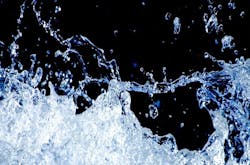Regulatory Update: The State of Water Regulations
About the author:
Kathleen Fultz is global regulatory and government affairs manager for the Water Quality Assn. Fultz can be reached at [email protected].
When looking back at 2019, states remained dedicated to strengthening lead testing and remediation and have been empowered to not wait for federal action on emerging contaminants.
State Action on Lead
The federal Lead and Copper Rule does not require all schools and childcare facilities to test for lead in drinking water. Joining several other states in mandating lead testing in schools and childcare centers are Maine, Maryland and Vermont. These three states passed legislation in 2019 on lead that also concentrated on installing remediation.
Maine directed the state Department of Health and Human Services to establish major substantive rules on water lead levels, testing protocols, appropriate abatement and mitigation methods and public notification requirements. In Maryland, in addition to testing for lead, the state now requires the state Department of Environment to work with the state Department of Education to establish and administer a grant program to assist local school systems with the costs associated with implementing remediation methods.
Arsenic & Safe Drinking Water Act Compliance
Other federally regulated contaminants are being examined by states to determine if the maximum contaminant level (MCL) needs to be lowered. New Hampshire is requiring its Department of Environmental Services to revise its rules relative to arsenic contamination in drinking water. The state’s House Bill 261 sets the MCL at 5 ppb for public water systems which will take effect no later than July 1, 2021.
To further examine remediation methods for Safe Drinking Water Act compliance, Delaware introduced House Bill 210 to establish a two-year residential drinking water purification system pilot program administered by the Department of Health and Social Services. Funding for the program would come from the Non-Federal Administrative Allowance of the Drinking Water State Revolving Fund.
State PFAS Action
States are not waiting on the U.S. EPA to start regulating other contaminants. California Assembly Bill 756 will require public water systems to monitor for perfluorooctanoic acid and perfluorooctane sulfonate.
Vermont and other states are acting beyond monitoring emerging contaminants. They are setting state enforceable maximum contaminant levels. Vermont Senate Bill 49 became law in May 2019 and sets a state MCL for the combined level of PFOA, PFOS, PFHxS, PFHpA and PFNA in drinking water at 20 ppt.
Emerging contaminants other than per- and polyfluoroalkyl substances (PFAS), being examined by states have included 1,2,3-trichloropropane, hexavalent chromium and microplastics. Illinois Senate Bill 1392 will require the Illinois EPA to define the term “microplastics” and examine the role of microplastics in public drinking water. The results of testing and reporting will be publicly disclosed.
A focus on drinking water has brought further conversation to remediation techniques and opportunities for point-of-use and point-of-entry technologies to be solutions for communities.
